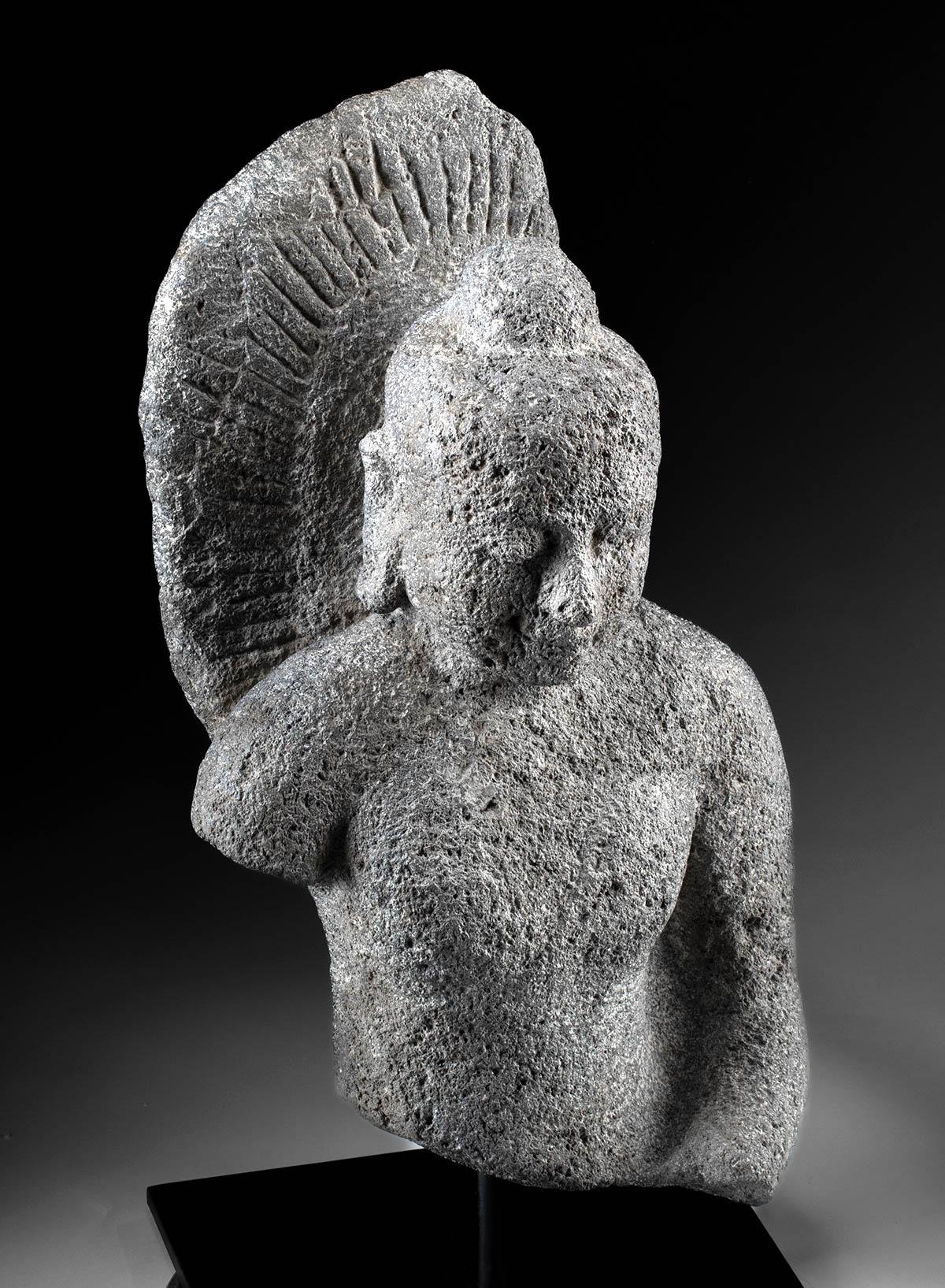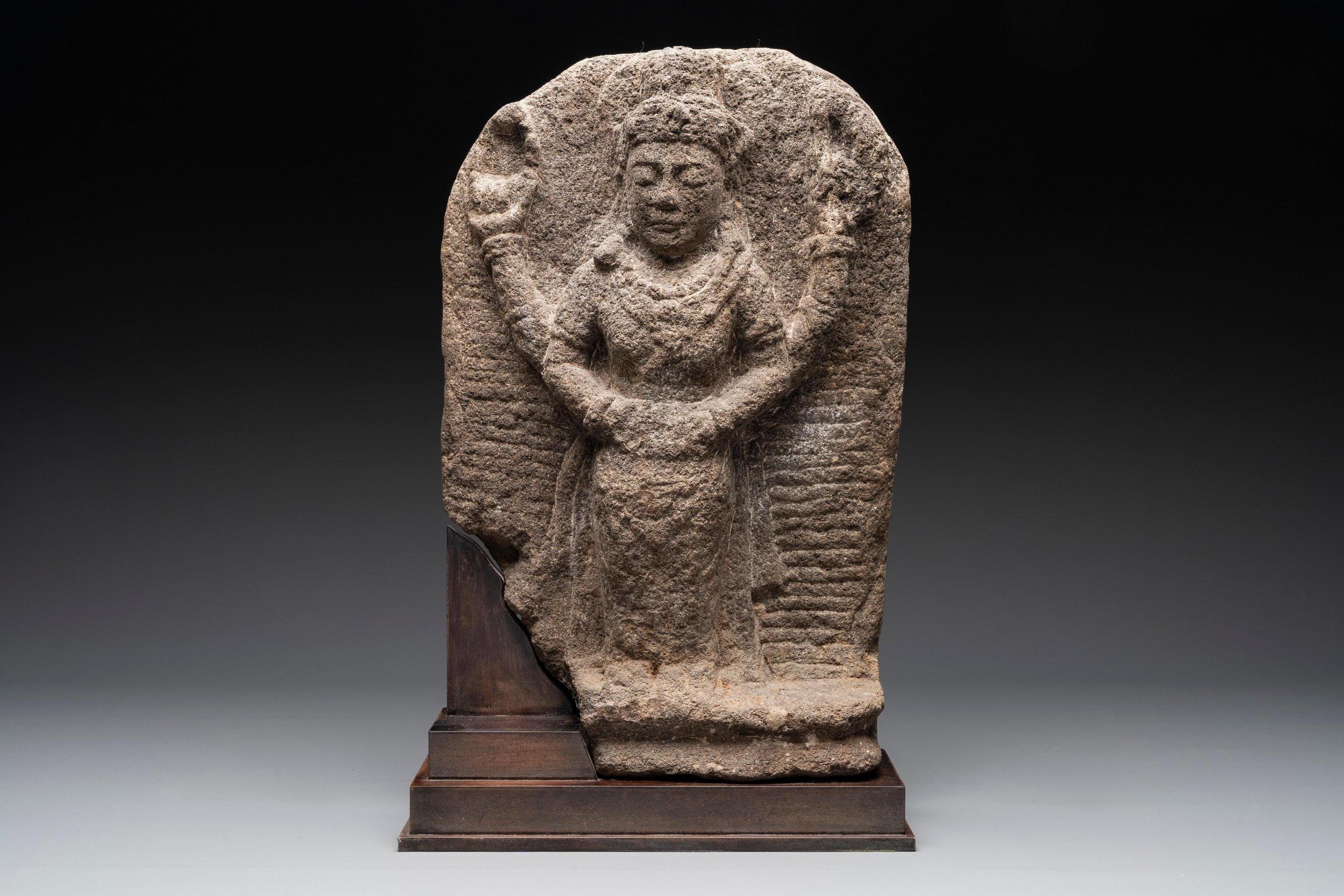
An ancient andesite figure of a Bodhisattva or Buddha. Java or Sumatra, Indonesia, 800-1200 CE.
Dimensions: 55 CM (H)
Indonesia is home to some of the most exquisite ancient sculptures in the world. Among these, Indonesian andesite sculptures stand out for their intricate craftsmanship, distinctively Nusantaran attributes and social significance. Andesite, a volcanic rock, was a favoured material for sculptors in ancient Indonesia, particularly during the height of the Hindu-Buddhist kingdoms due to its abundance in the region. This particular sculpture of a Buddha or Bodhisattva is a prime example of such sculptures and will be the focus of our research today. It was acquired from the estate of a private Dutch official and is now in our collection. The degree of erosion on this work of art is likely the result of hundreds of years of being exposed to Indonesia’s tropical climate before being unearthed in the 20th century. However the serenity of the subject’s carefully carved face is undeniable. It is even more impressive that the artist managed to produce a work that successfully conveys all the positive traits of the divine subject despite having used a challenging medium.
Below, a similar piece from our collection depicts Hindu Goddess Durga. At the time, Hinduism and Buddhism were integrated into the pre-existing local animistic beliefs, leading to the creation of different branches of classical Hindu-Buddhist art that are stunningly recognisable and unique to the region. One of the most prominent features of classical Nusantaran sculpture is the sharper and more slender form of iconographies.
Additional Information
-
The use of andesite in Indonesian sculpture became common between the 8th to 14th centuries. This period saw the rise of powerful kingdoms such as the Sailendra, Mataram, and Majapahit, which were heavily influenced by Hinduism and Buddhism. The most iconic andesite sculptures are found in Java, the heartland of these ancient civilisations. Although later Indonesian art saw a large rise in terracotta sculpture due to its malleability and economic advantages, it can be argued that the most stunning examples of Indonesian sculpture come in the form of andesite, such as the famous Prajnaparamita of Java, which dates back to the 1200s during the reign of the Singhasari kingdom.
-
The andesite sculptures of Indonesia are not merely artistic masterpieces; they are also profound cultural and religious symbols. They provide insight into the spirituality and values of ancient Javanese society, where Hinduism and Buddhism thrived and at times even competed with each other. The sculptures were often placed in temples and sacred sites, serving as objects of veneration and as focal points for religious rituals.
The Borobudur Temple, another iconic site in Central Java, is adorned with thousands of andesite relief panels and Buddha statues. Built in the 9th century, Borobudur is the largest Buddhist temple in the world and a UNESCO World Heritage Site. The temple’s design and the sculptures it houses reflect the syncretic blend of indigenous Javanese and Buddhist architectural styles.

An andesite figure of Goddess Durga. Java , Indonesia, 1200-1500CE.
Dimensions: 46 CM (H)
